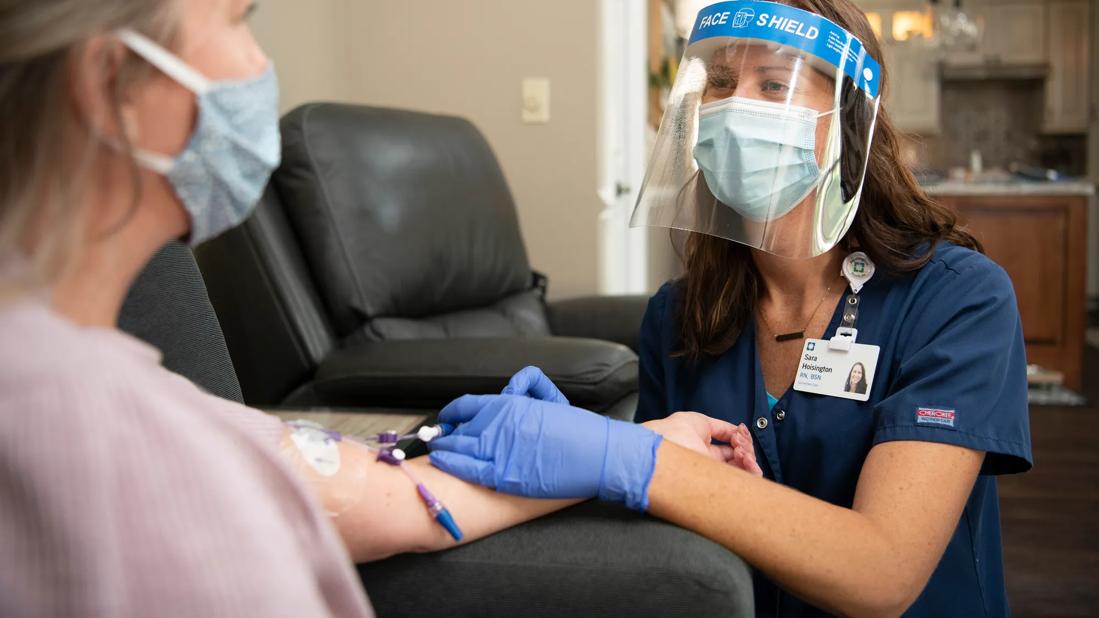Initiative aims to reduce emergency department visits

An estimated $8.3 billion is spent annually on unnecessary visits to emergency departments in the U.S., according to a 2019 report cited by the Healthcare Financial Management Association. This summer, Cleveland Clinic Home Care launched a new program to reduce inappropriate emergency department utilization.
Advertisement
Cleveland Clinic is a non-profit academic medical center. Advertising on our site helps support our mission. We do not endorse non-Cleveland Clinic products or services. Policy
The program is a collaboration among home care triage nurses and physicians on the Cleveland Clinic Community Care virtualist team. “It’s an important initiative for patients because we can help keep them out of the emergency department or hospital and, at the same, maintain the continuity of care they need between discharge from the hospital and follow-up with their primary care doctor,” says Jan Bautista, MD, a physician with the Center for Connected Care and co-director of the new program.
Cleveland Clinic Home Care provides care for patients who have been discharged to home from the hospital. It is part of the Center for Connected Care, which offers an array of clinical programs to help patients with their post-hospital needs when they are discharged to home, a skilled nursing facility or a long-term acute care hospital.
With the new program, patients at home call a triage nurse if they are experiencing new symptoms or have a medical concern. The nurse does a comprehensive assessment and utilizes past visit notes from home care staff to resolve the situation. “The nurse determines if it’s a true emergency, could be followed up on the next day or requires input from a physician – even if to just reassure the patient,” says Katie Shreve, BSN, RN, COS-C, Nurse Manager of the South Region for Cleveland Clinic Home Care.
If warranted, the nurse contacts a virtualist physician, who then initiates a virtual visit with the patient, either via the phone or a video chat. “The physician sees if the situation can be managed without the patient going to the ED,” says Dr. Bautista. “That might include making medication adjustments or ordering labs.” If the physician ascertains that the patient is able to remain at home, then they get back in touch with the triage nurse to arrange for any follow-up care. If the patient requires emergency care, then the physician recommends they go to the emergency department.
Advertisement
Since launching the program in July, triage nurses have escalated 10 calls to virtualist physicians. Seven of those patients avoided a trip to the emergency department.
For example, in August a patient with COVID-19 called a triage nurse three days post-discharge when she developed fevers and chills despite taking acetaminophen. The nurse was unsure if she should return to the emergency department, so she contacted a virtualist.
The physician assured the patient that fevers and chills can sometimes recur during the COVID-19 recovery phase. He added ibuprofen to her medication and recommended a follow-up visit from a home care nurse the following day. “The next day, her symptoms had improved slightly and she was not having fevers,” says Dr. Bautista. “Subsequently, she was not returned to the hospital.”
The program is available from 8 a.m. to 11 p.m. on weekdays and from 8 a.m. to 8 p.m. on weekends. Currently, four triage nurses and six virtualist physicians are part of the team. “We are very excited about the potential for this program moving forward to reduce readmissions and make sure we are providing robust patient care,” says Suzanne Blankemeier, Assistant Director of Nursing for Cleveland Clinic Home Care.
Shreve adds that the program shines a light on the great work done by home care nurses. “It’s exciting for home care to be tapped into for the collaboration with physicians,” she says. “There are a lot of resources we can provide, and we are the experts when it comes to outpatient, at-home care.”
Advertisement
Advertisement

Patients report improved sense of smell and taste

Clinicians who are accustomed to uncertainty can do well by patients

Unique skin changes can occur after infection or vaccine

Cleveland Clinic analysis suggests that obtaining care for the virus might reveal a previously undiagnosed condition

As the pandemic evolves, rheumatologists must continue to be mindful of most vulnerable patients

Early results suggest positive outcomes from COVID-19 PrEP treatment

Could the virus have caused the condition or triggered previously undiagnosed disease?

Five categories of cutaneous abnormalities are associated with COVID-19